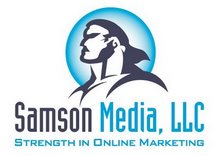
5 Reasons Why SEO will NOT Help You
A large part of our
business is conducting professional Search Engine Optimization services for
small and medium-sized businesses. So you might be surprised to learn that we
talk ourselves out of more SEO projects than not. Or, more accurately, we talk
our clients out of doing SEO.
Many people see, hear and
read about various SEO success stories from friends, colleagues and business
associates and think, “Hey, sounds great. How can I use that for MY business?”
The problem with SEO,
probably more than any other Internet marketing tactic, is that it’s often the
wrong tool for the job. No matter how bad you WANT it to be the answer to your
problems and help you increase sales --- it’s just not going to cut it. SEO IS
NOT ALWAYS THE RIGHT TOOL FOR THE JOB
To help you evaluate
whether SEO can be part of your well-rounded Internet marketing strategy,
here’s 5 reasons why SEO will NOT help you:
1. You Have a Made Up
Product:
The whole foundation of
SEO is to position your webpages to be the answer to the question regarding
relevant searches. If the product or service you offer is something so unique
or made up, you can’t leverage SEO for the simple reason that nobody knows to
search for it. 1. You Have a Made Up Product:
Case in point was a
company that came to us to implement an SEO program for “Dog Wine.” The problem
is two-fold: Wine is actually bad for your dog so nobody would be looking for
those keywords together unless maybe it was for “Dog wine poisoning.” Secondly,
the product wasn’t actually wine at all but a type of gravy commonly sold to
spruce up kibble. So while the product was real and perfectly OK to feed your
dog, the association between the made up product category (dog wine) and the
actual product (a kibble additive commonly referred to as “dog gravy”) was
beyond the scope of SEO. 1. You Have a Made Up Product: FOR EXAMPLE:
2. Low Search Volume: The
biggest issue we find is that the keyword phrases associated with the company’s
products and services are in low demand.
Nobody wants to hear that what they’re selling is not in demand or the greatest
thing since sliced bread. SEO exposes weaknesses in branding and product
positioning. Sometimes SEO is considered a panacea for a weak product offering
or non-existing branding campaign. SEO can’t perform magic, and certainly can
not create demand where little or non exists. SEO works best when you have a
product or service with well-articulated BENEFITS to the person doing the
search, since most searches start with “How do I …” or “How to…” Be the answer
to that question assuming it’s even being asked. Our keyword research will
expose those weaknesses right away.
3. No Supporting Efforts:
Search Engine Optimization has become increasingly complex in that one-time
efforts, while still important, aren’t enough to sustain any short term
success.
And with the rising importance of social media’s impact on SEO,
businesses will need to invest in ongoing social media efforts to boost
their baseline SEO results since all the major search engines have
gone on record that social media signals going in and out of a website
are a validation of that site’s authority on a particular subject (and set
of keywords). So to invest in SEO is really a baseline step that needs
to be reinforced with social media marketing and content marketing
and blogging on an ongoing basis. 3. No Supporting
Efforts:
4. Website Design is Not
Set Up For SEO: The number one SEO problem
related to website design is when
all products and services are
listed on a single page.
In order to perform proper SEO, each product or service must have
it’s own page since proper onsite SEO requires unique META tags,
title tags, keywords, etc. Another hurdle is when clients have
Flashheavy websites or resist placing actual text and words on the
site preferring mostly pictures. SEO is about content, mainly text.
4. Website Design is Not Set Up For SEO:
5. Need Results
Immediately: SEO can take time to take effect.
The very nature of GOOD SEO practices is to try and mimic organic
linking and social media activity in as natural means as possible. That means
slowly, and gradually. And even then, it can take the search engines weeks and
even months to index your site and move it up in the rankings — if at all!
So if you have a special event or you’re planning a product roll
out or other timely event, SEO isn’t going to be your ticket to the top. You’ll
be better implementing a Pay Per Click advertising campaign or maybe an email
marketing campaign combined with social media to make things happen on YOUR
schedule.
Taking these 5 tips into
consideration, SEO can be a very powerful tool in your Internet marketing
arsenal. But it’s not the end-all be-all. To Summarize Your SEO Efforts

